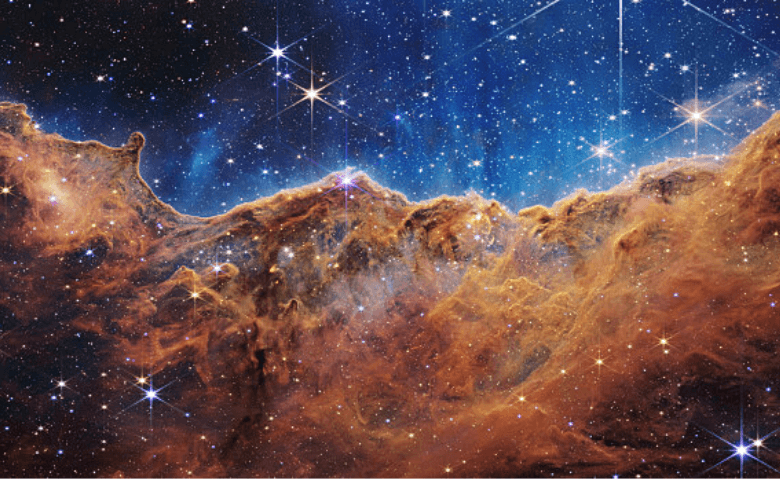Previous observations have detected faint infrared sources in the immediate vicinity of Sagittarius A*, the supermassive black hole at the center of our galaxy. Although very high gas densities are required to overcome the strong tidal forces of the black hole in the formation of stars, there is increasing evidence that new stars are being born in the heart of the Milky Way.
With her team, Nadeen Sabha from the Institute of Astro- and Particle Physics at the University of Innsbruck will now test this hypothesis with the help of the recently commissioned James Webb Space Telescope. „We will point the telescope at these faint sources at the center of our galaxy in August and September,“ says the Jordanian astrophysicist. „With the new, highly sensitive telescope, it should be possible to detect these newborn stars with relatively low masses.“
Should the research team be able to confirm that these light sources are indeed such young stars, this would mean that planets can also form under the inhospitable conditions near black holes in the center of galaxies.
In addition to the investigations with the Space Telescope, Nadeen Sabha is also investigating star formation in the vicinity of the supermassive black hole at the centre of the Milky Way with ESO’s Very Large Telescope (VLT) in Chile. This high-resolution ground-based telescope can also be used to observe regions in the center of the galaxy that are too bright for the highly sensitive James Webb telescope.
About the person
The Innsbruck astrophysicist Nadeen B. Sabha is involved in three other research projects with the James Webb Space Telescope, two of which also concern the center of the Milky Way, a third investigates sources of gravitational waves.
Nadeen Sabha studied Applied Physics at the Jordanian University of Science and Technology. As a member of the Bonn Cologne Graduate School of Physics and Astronomy (BCGS), she obtained a Master’s degree in Experimental Physics in 2010, for which she was awarded the DAAD Prize 2011 for excellent international students at German universities. Based on her master’s thesis on high-resolution infrared studies of the central parsec of our galaxy, she received her doctorate from the University of Cologne in 2014.
Their research focuses on studying the center of our galaxy using infrared observations to study the formation and abundance of stars in a massive environment. She is also part of ENGRAVE, an international collaboration that investigates the detection of electromagnetic counterparts to sources of gravitational waves.
As part of her work at the University of Innsbruck, Nadeen Sabha is also involved in the development of the scientific programmes for the instruments of the ESO Extremely Large Telescope (ELT), the next generation of ground-based telescopes (40 m class).



